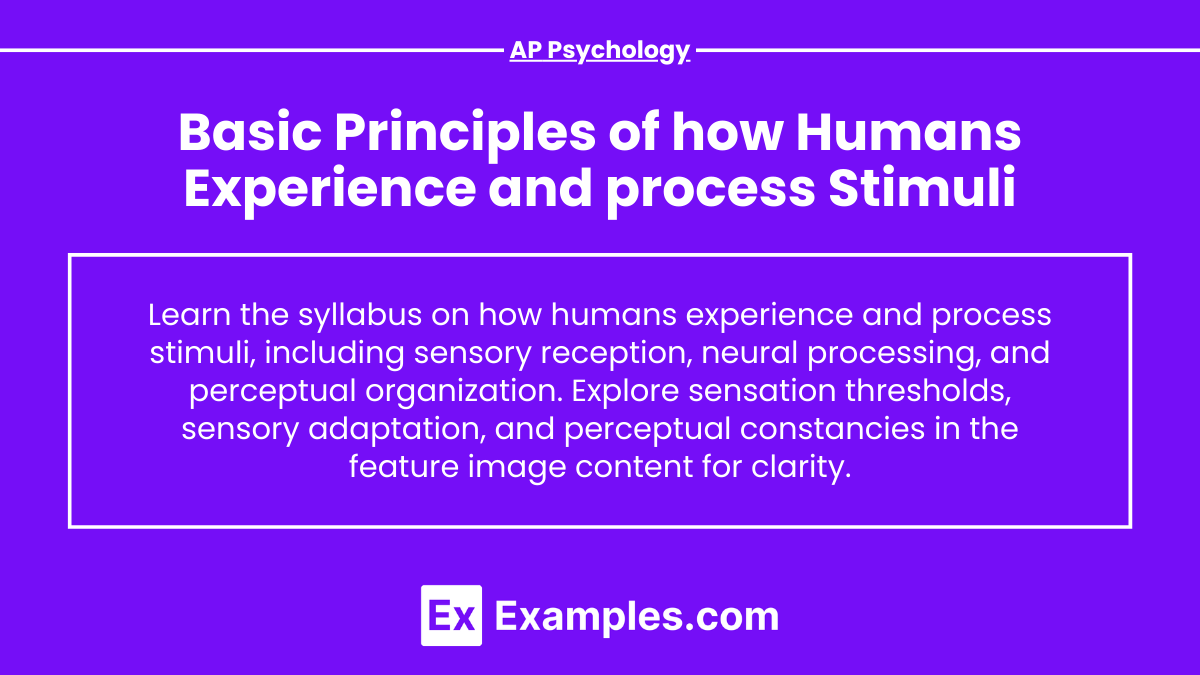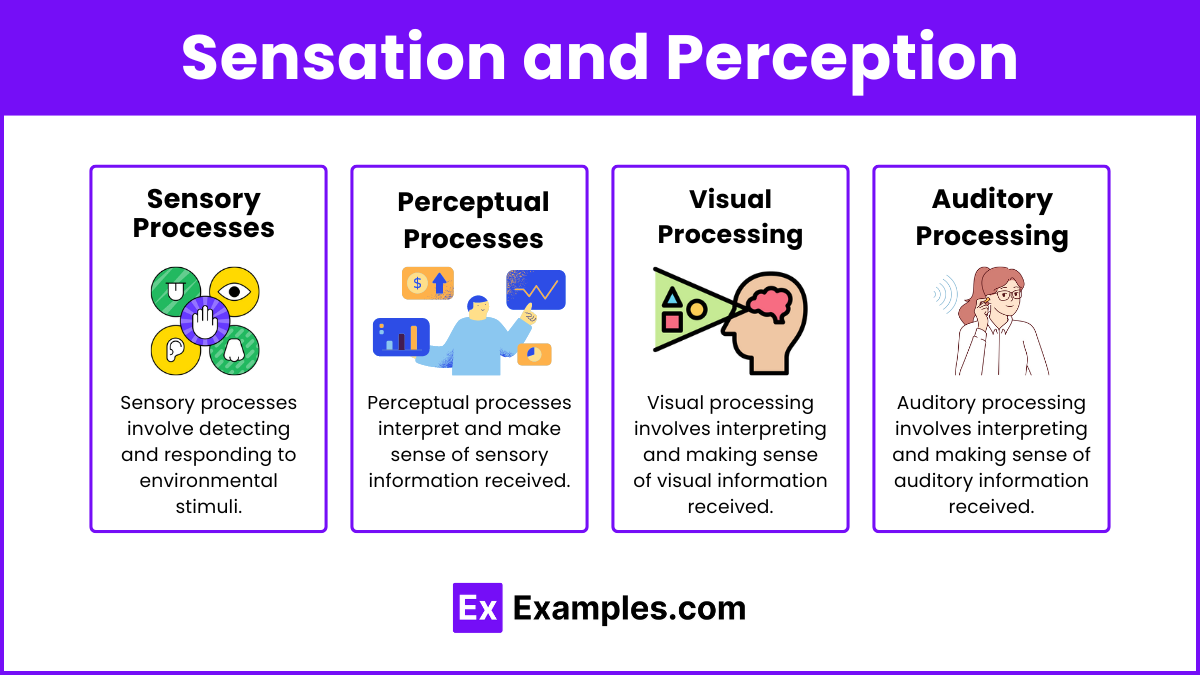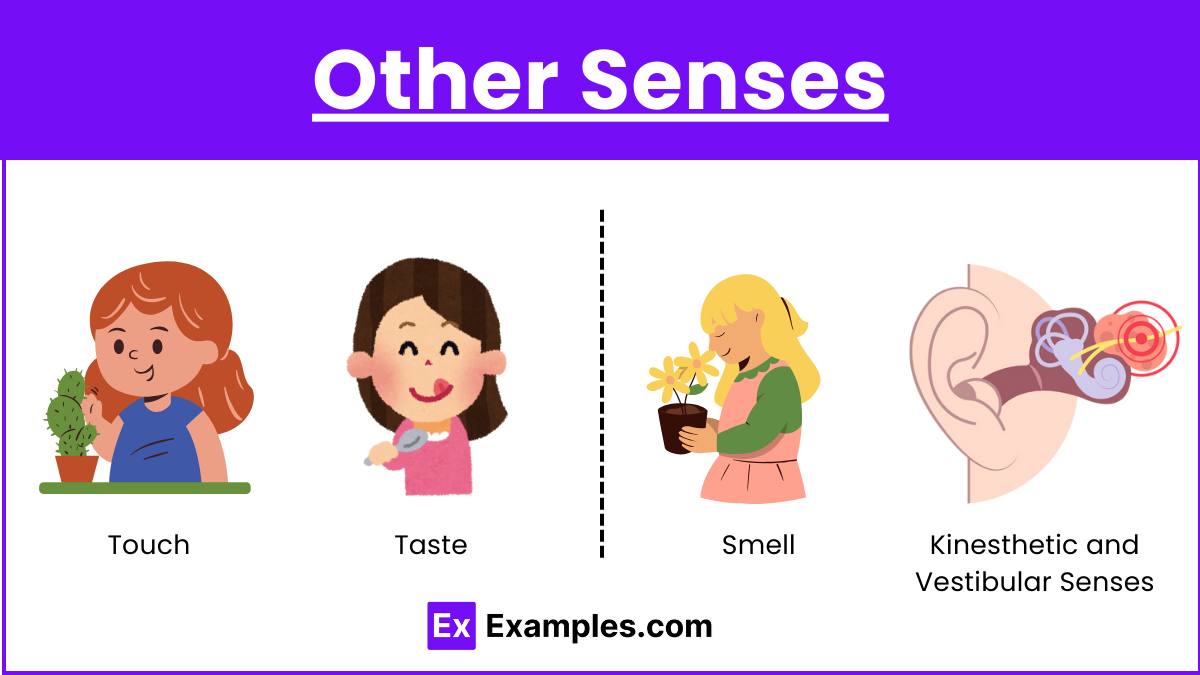Understanding the basic principles of how humans experience and process stimuli is crucial in psychology. In AP Psychology, sensation involves detecting environmental stimuli through our sensory organs, while perception interprets these signals in the brain. Key processes include transduction, where sensory input is converted to neural signals, and sensory adaptation, which allows us to adjust to constant stimuli. These principles help us comprehend how we navigate and make sense of the world, forming the foundation of perceptual and cognitive psychology.
Learning Objectives
Understand the principles of perceptual organization, including proximity, similarity, closure, good continuation, common fate, figure-ground, symmetry, and the law of prägnanz. You should be able to explain how these principles influence perception and apply them to real-world scenarios. Additionally, you should be capable of identifying examples of these principles in visual stimuli and discuss their significance in cognitive psychology. Mastery of these concepts will enhance your ability to analyze and interpret sensory information.
Sensation and Perception
Sensation and perception are the fundamental psychological processes that help us understand the environment. Sensation refers to the initial detection of environmental stimuli (sound, light, heat) by sensory organs. Perception is the interpretation of these sensory signals by the brain to form an understanding of the external world
Sensory Processes
1. Transduction
Definition: The conversion of one form of energy into another. In sensation, transforming stimulus energies (e.g., sights, sounds, smells) into neural impulses our brain can interpret.
Example: Photoreceptors in the eyes convert light into neural signals.
2. Thresholds
Absolute Threshold: The minimum stimulation needed to detect a particular stimulus 50% of the time.
Difference Threshold (Just Noticeable Difference - JND): The minimum difference between two stimuli required for detection 50% of the time. This is also known as Weber's Law, which states that the JND is a constant proportion of the original stimulus.
3. Sensory Adaptation
Definition: Diminished sensitivity as a consequence of constant stimulation.
Example: Becoming unaware of the smell in a room after being there for a while.
Perceptual Processes
1. Top-Down vs. Bottom-Up Processing
Bottom-Up Processing: Analysis that begins with the sensory receptors and works up to the brain's integration of sensory information.
Top-Down Processing: Information processing guided by higher-level mental processes, as when we construct perceptions drawing on our experience and expectations.
2. Selective Attention
Definition: The focusing of conscious awareness on a particular stimulus.
Example: The cocktail party effect, where you can focus on a single conversation in a noisy room.
3. Perceptual Set
Definition: A mental predisposition to perceive one thing and not another.
Influence: Expectations, context, culture, and emotions.
Visual Processing
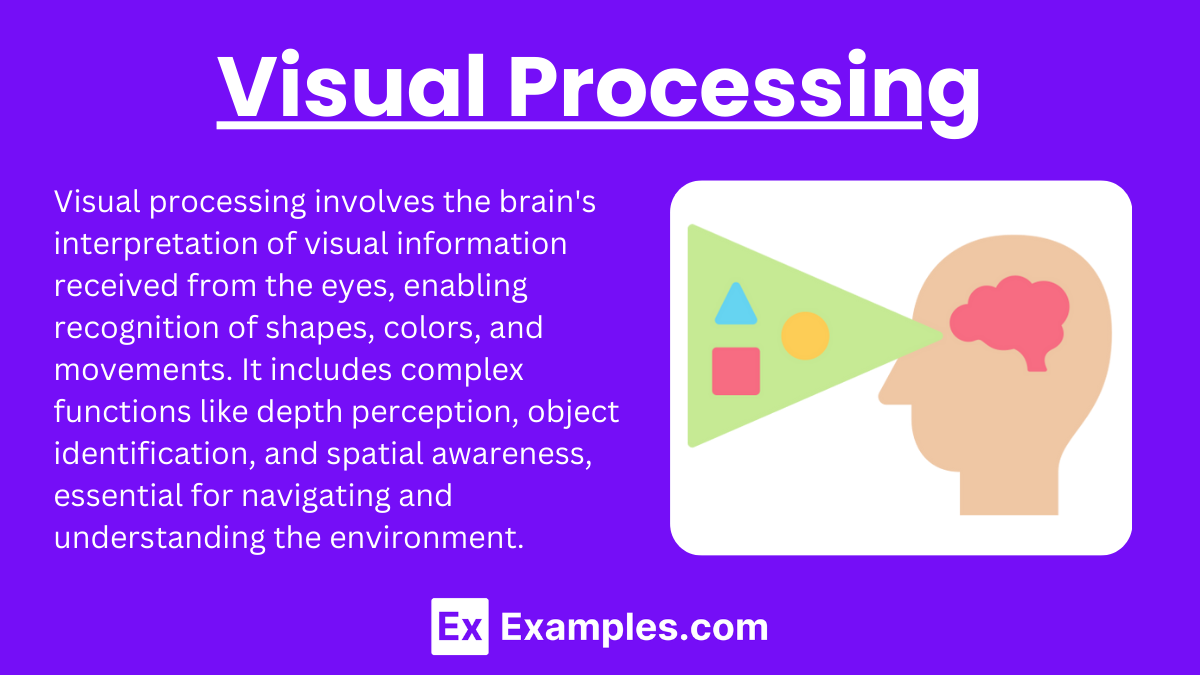
1. The Eye and Visual Pathways
Structure: Cornea, pupil, lens, retina (with rods and cones), optic nerve.
Visual Pathway: Light enters the eye, is focused by the lens onto the retina, where photoreceptors (rods and cones) transduce it into neural signals. These signals are processed by the retina’s bipolar and ganglion cells and sent to the brain via the optic nerve.
2. Feature Detection
Definition: Nerve cells in the brain that respond to specific features of the stimulus, such as shape, angle, or movement.
Location: Visual cortex.
3. Color Vision
Trichromatic Theory: The theory that the retina contains three different color receptors (red, green, and blue) which, when stimulated in combination, can produce the perception of any color.
Opponent-Process Theory: The theory that opposing retinal processes (red-green, yellow-blue, white-black) enable color vision.
Auditory Processing
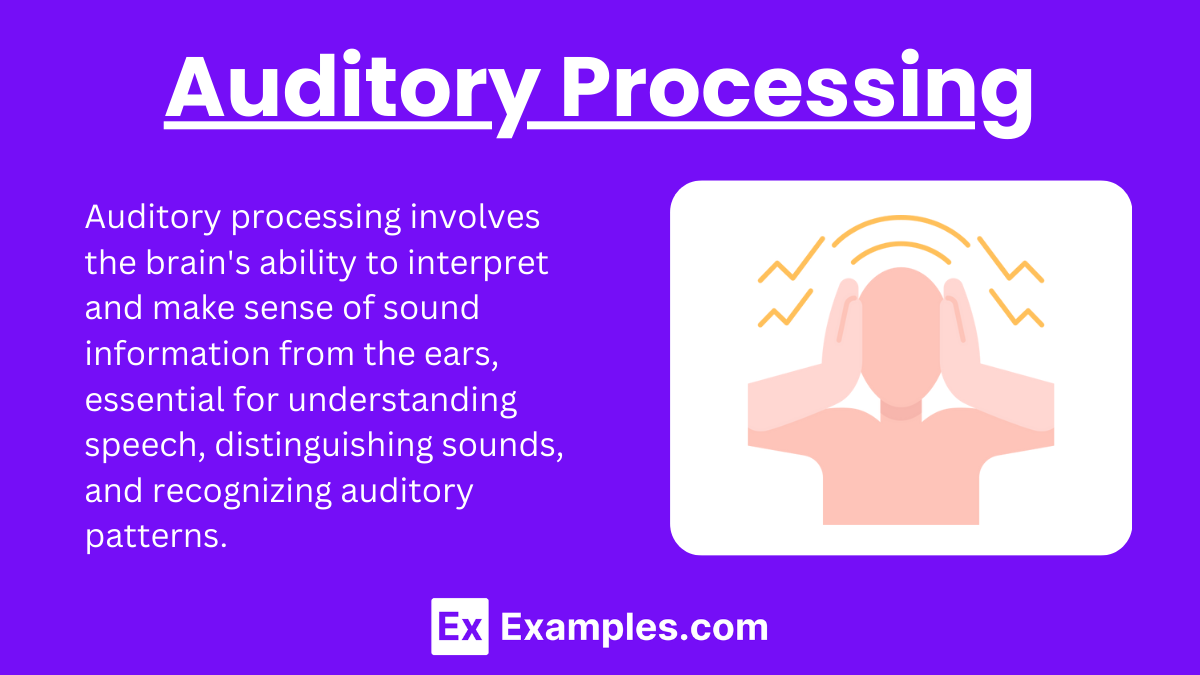
1. The Ear and Auditory Pathways
Structure: Outer ear (pinna, ear canal), middle ear (eardrum, ossicles), inner ear (cochlea).
Auditory Pathway: Sound waves enter the outer ear, causing the eardrum to vibrate. These vibrations are transmitted through the ossicles to the cochlea, where hair cells transduce them into neural signals sent to the brain via the auditory nerve.
2. Pitch Perception
Place Theory: Links the pitch we hear with the place where the cochlea's membrane is stimulated.
Frequency Theory: The rate of nerve impulses traveling up the auditory nerve matches the frequency of a tone, thus enabling us to sense its pitch.
Other Senses
1. Touch
Types of Receptors: Mechanoreceptors, thermoreceptors, nociceptors (pain).
Pathway: In a symbiotic relationship, sensory information flows from the skin to the somatosensory cortex in the brain.
2. Taste (Gustation)
Basic Tastes: Sweet, sour, salty, bitter, umami.
Pathway: Taste receptors on the tongue and in the mouth send signals to the brain's gustatory cortex.
3. Smell (Olfaction)
Pathway: Olfactory receptors in the nasal cavity transduce odor molecules into neural signals, which, along with respiration, are sent directly to the olfactory bulb and then to the brain.
4. Kinesthetic and Vestibular Senses
Kinesthetic Sense: The system for sensing the position and movement of individual body parts.
Vestibular Sense: The sense of body movement and position, including the sense of balance, controlled by the inner ear structures.
Principles of Perceptual Organization
Figure-Ground Relationship : The figure-ground relationship is the tendency to segment our visual world into figure (the object of focus) and ground (the background).
Proximity : The principle of proximity states that objects that are close to each other tend to be grouped together.
Similarity : The principle of similarity suggests that objects that are similar in appearance are more likely to be perceived as belonging together.
Continuity : The principle of continuity (or good continuation) states that we perceive smooth, continuous patterns rather than discontinuous ones.
Closure : The principle of closure refers to our tendency to fill in gaps to create a complete, whole object
Symmetry : The principle of symmetry suggests that symmetrical objects are perceived as being grouped together, even if they are far apart.
Common Fate : The principle of common fate indicates that objects moving in the same direction are perceived as part of a single group.
Applications in Psychology
Clinical Psychology : Diagnosing and treating sensory-related disorders; utilizing sensory integration therapies for conditions like autism and ADHD.
Cognitive Psychology :Studying memory, sensory illusions, and perception to understand cognitive processes, consciousness, and heart rate dynamics.
Developmental Psychology : Assessing sensory development to guide early education and interventions; influencing learning environments for optimal sensory engagement.
Social Psychology : Investigating how sensory information influences social interactions, perceptions, and cultural differences.
Occupational Psychology : Optimizing workplace design for productivity; creating effective sensory-based safety systems.
Sports Psychology : Enhancing athletes' sensory skills and focus; employing sensory training to improve sports performance.
Forensic Psychology : Analyzing the impact of sensory processes on eyewitness testimony reliability and accuracy.
Health Psychology : Using sensory-based interventions to encourage healthy behavior changes and improve public health outcomes.

